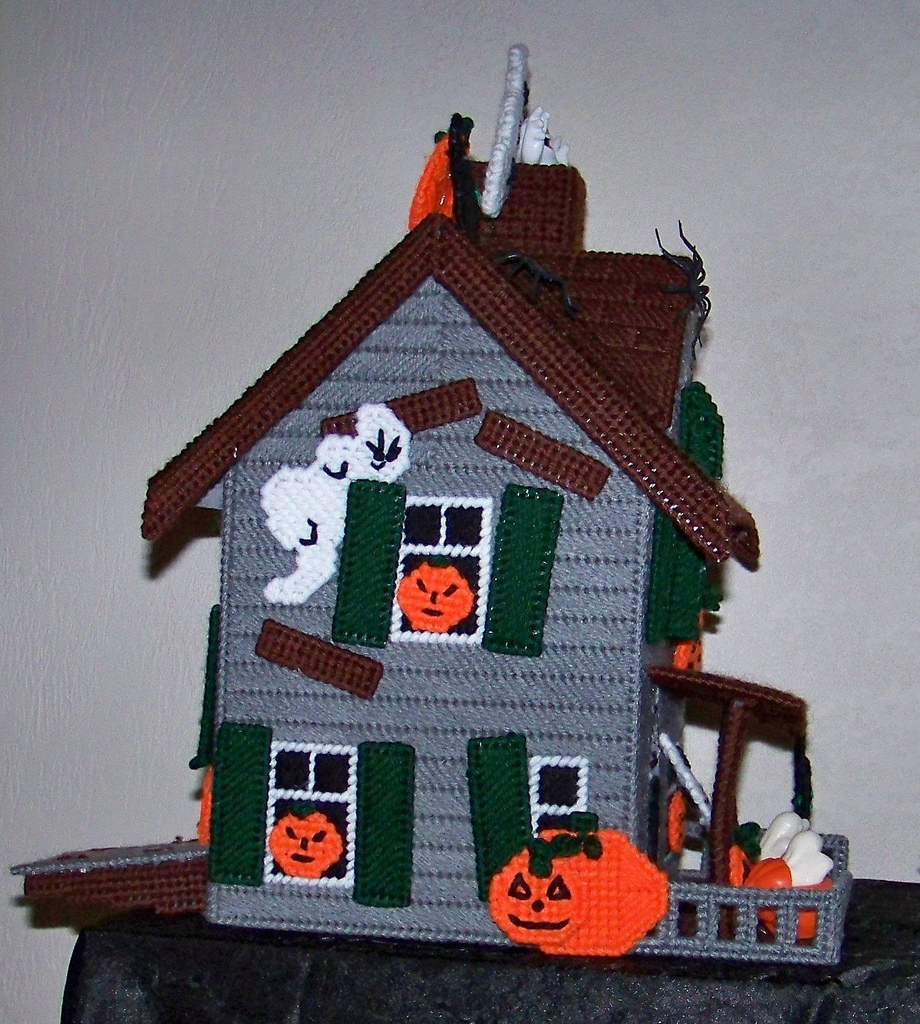Scary is Fun for Some Kids
Haunted houses were one of my favorite stops when visiting amusement parks as a child. Braced and full of anticipation for whatever creature might leap out with a clanging chain or a terrifying laugh, I kept my hands clenched tightly and screamed as much as possible!
Victory and relief greeted me at the end when the doors opened and the “real world” was still there. I had survived the dreaded darkness.
Children’s Fears and Worry
 Not all kids enjoy this kind of experience. Some by nature are more temperamentally sensitive and thereby affected negatively by such intensity.
Not all kids enjoy this kind of experience. Some by nature are more temperamentally sensitive and thereby affected negatively by such intensity.
Haunted houses are not the carnival ride of choice for every child. In fact, most pre-school children are not yet able to distinguish fantasy from reality. For them, monsters seem real, and not just at amusement parks. Most children, at some time in their development, will “dwell in a haunted house.”
A toddler’s fear over an invisible creature or a teen’s worry about a pending move can last anywhere from a few minutes to a few days or even weeks. (If the fear or worry lasts any longer, professional help may be needed.) Whatever the issue or even the age of the child, the feelings themselves can be frightening when unfamiliar.
Fearful or worried children in your home can create “haunting” feelings for parents who usually feel more “successful” when their children are smiling, bouncy, cooperative, and enjoying life. You want your children to be happy, contented, and pleased with themselves and their lives. Therefore, your tendency may be to offer reassurance and comfort ASAP.
Let Children Experience Their Emotions – even Difficult Ones
A Situation
I recall an evening last spring sitting at the kitchen table with my ten-year-old daughter. A school project was looming over her head. Fear of doing it incorrectly, not having enough information, not completing it on time, disappointing the teacher … all came tumbling out between sobs and shaking.
Quickly, I reached out to affirm her abilities, praise her efforts, and to reassure her that the teacher would be understanding. I even offered to talk with the teacher. She only sobbed harder, repeating her earlier worries with increased intensity.
How to Respond
Then it clicked. She needed me to listen, accept, and empathize with her instead of trying to “make it all better.” Gradually, I let go of my agenda and began responding to the reality of her world, her dreaded darkness.
“You aren’t sure what Mrs. B. wants you to do.”
“You feel worried that you can’t do it all by tomorrow.”
“It seems like way too much to do.”
Why It Worked
I reflected these statements back to her, taking time in between to nod my head, touch her arm, and add an “uh-huh” or “umm” as acknowledgement. Her body began to relax; the sobs decreased. These comments, called active listening statements, were giving her permission to feel her pain and to be in the ‘now’ with her feelings, uncertain of what might lie ahead.
Just letting her know that I understood what she was experiencing and that I accepted her emotions helped her to move out of her “haunted house.” She was able to get beyond the upset more quickly and effectively than when I tried to talk her out of her perceptions, convince her that she was capable, and persuade her that she had nothing to worry about.
At that time of heightened emotion, she was just not able to take in the more positive and optimistic perspective. Consider your own reactions when describing a troubling experience to someone. Most people feel put down or discounted when they hear “It’ll be OK,” or “Don’t worry.”
Paradoxically, it seems that in order to raise happy kids, you need to allow for a lot of unhappiness and difficult emotions. In other words, you need to let them experience times in a “haunted house” so they are prepared to live in the real world with all its twists-and-turns, ins–and-outs, highs-and-lows.
Develop Your Relationship
Haunted houses are probably more fun when you know you can share the experience with someone you trust. (Come to think of it, I never traveled through the real ones alone!) Stopping to listen to children’s feelings is a way to be with them in their moments of distress and respond to them in a healthy way.
In this way, you can raise children who are comfortable with their emotions; you can build relationships with them that are trusting and secure; and you can become adults who accept the many different aspects of your children – even the scared, worried and fearful parts.
By Pam Nicholson, MSW, Certified Parenting Educator
____________________________________________________________
For more information about children’s fears, check out the following book. Purchasing from Amazon.com through our website supports the work we do to help parents do the best job they can to raise their children.
<books to read with your children about fears
<recommended books about communication
<all our recommended parenting books
____________________________________________________________

